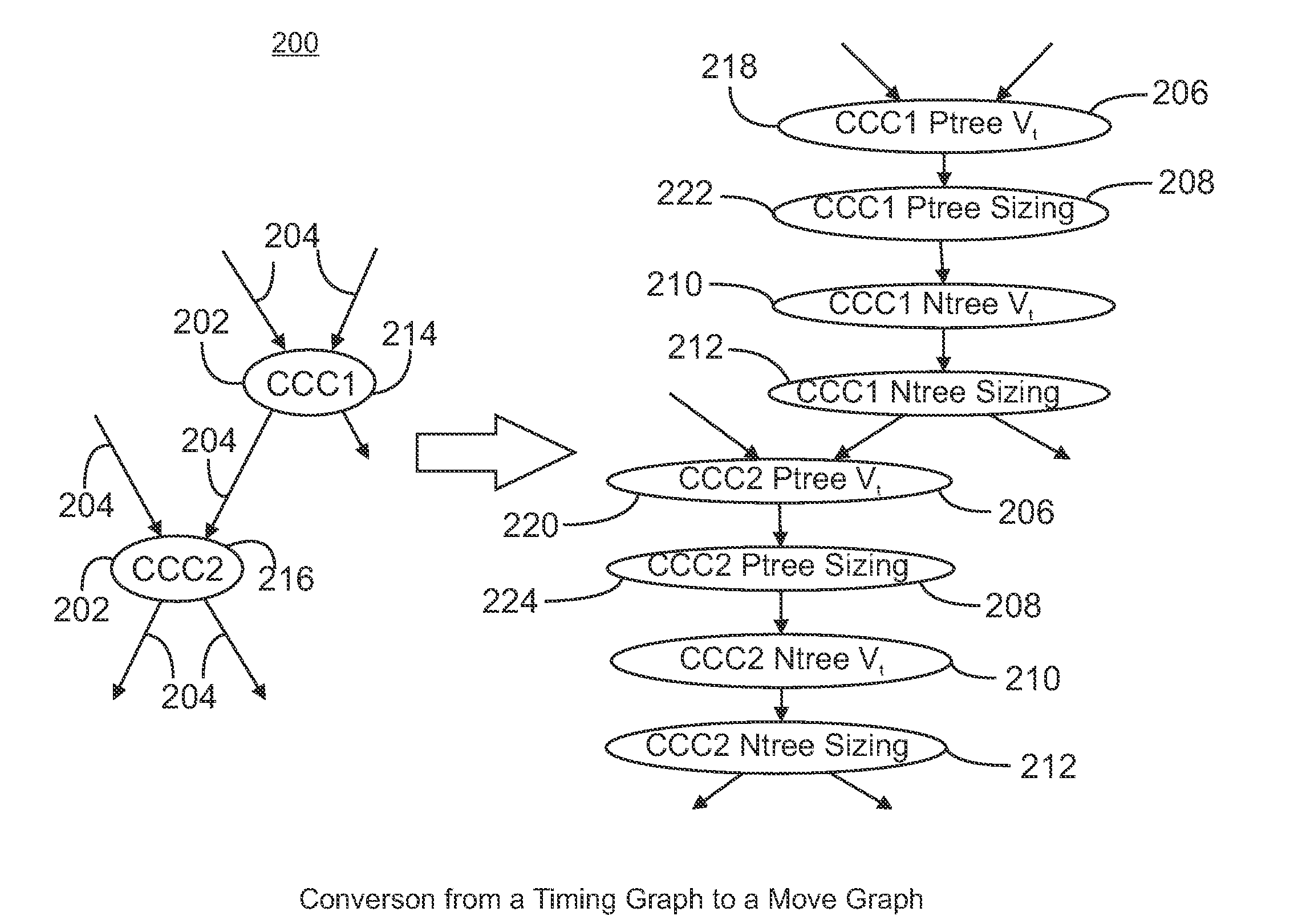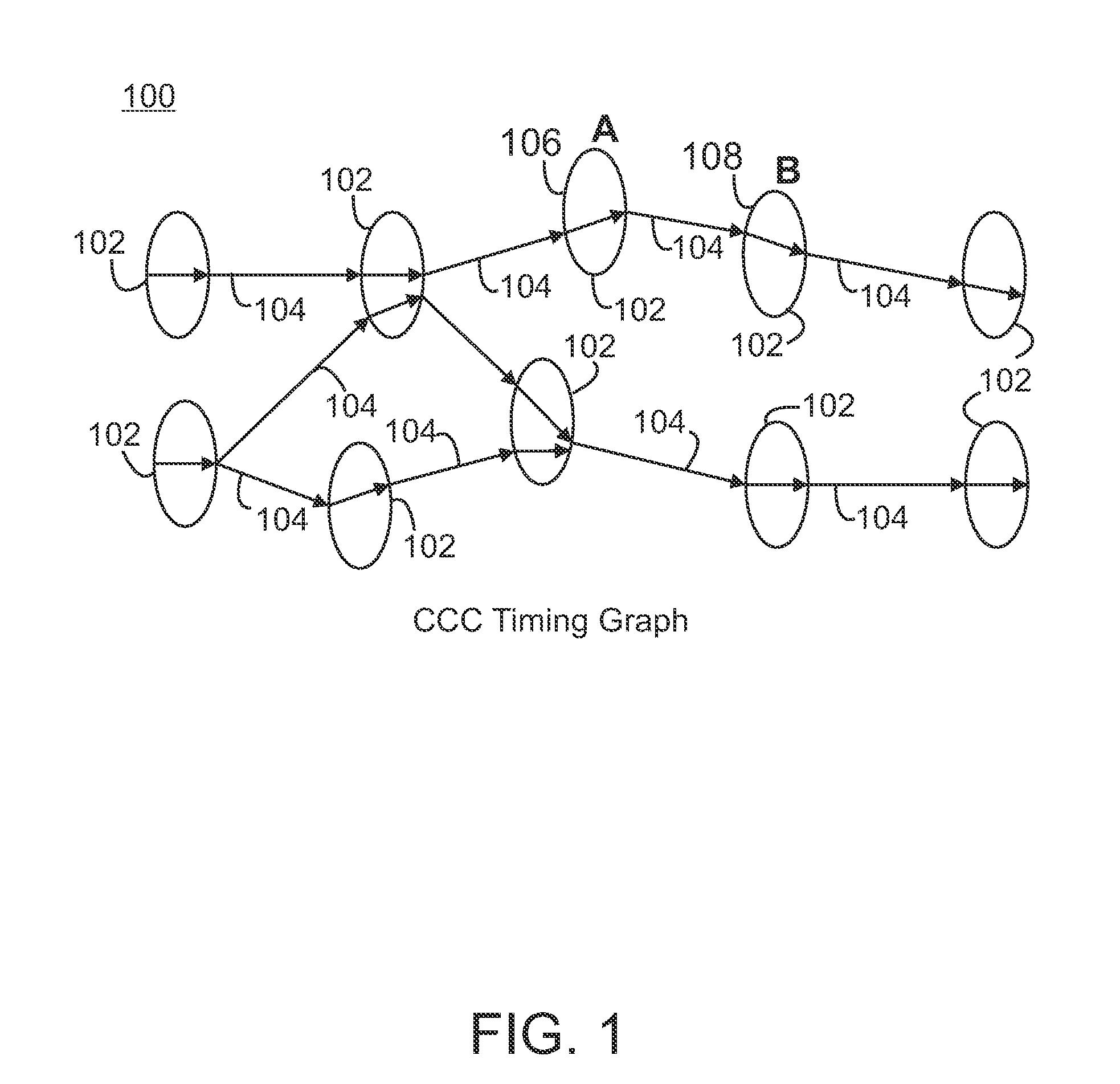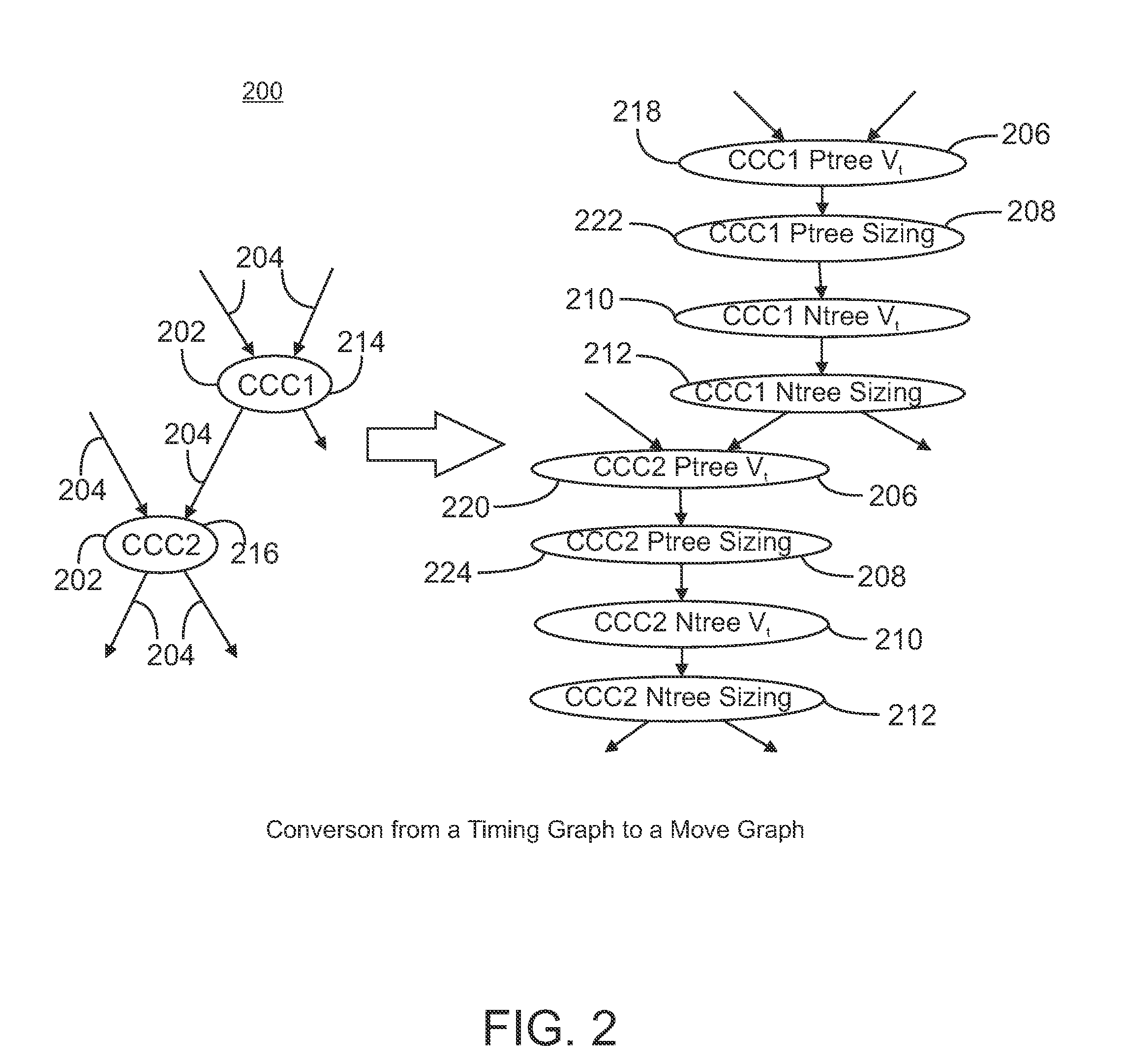Simultaneous Power and Timing Optimization in Integrated Circuits by Performing Discrete Actions on Circuit Components
a technology of integrated circuits and discrete actions, applied in computer aided design, program control, instruments, etc., can solve the problems of increasing power limitations, running faster at the expense of excessive leakage current, and increasing the importance of high-performance circuits, so as to achieve the optimal result faster and less computational time
- Summary
- Abstract
- Description
- Claims
- Application Information
AI Technical Summary
Benefits of technology
Problems solved by technology
Method used
Image
Examples
Embodiment Construction
[0016]Exemplary embodiments of systems and methods in accordance with the present invention utilize a circuit-level optimization procedure that manipulates threshold voltage assignments, transistor widths, gate channel lengths and other parameters that allow a given integrated circuit (IC) arrangement to meet power and timing requirements. This is different than continuous optimization, where some design parameters can be chosen freely on an analog scale. Methods in accordance with the present invention are sensitivity-based and perform discrete optimization. In one embodiment the operation of the methods is made discrete as is described in J. P. Fishburn and A. E. Dunlop, TILOS: A Posynomial Programming Approach to Transistor Sizing, International Conference on Computer-Aided Design Digest of Technical Papers, pp. 326-328 (1985). However, the sensitivity is defined in an inverse way. Starting with an arrangement that meets the desired timing requirement, the power is minimized with...
PUM
 Login to View More
Login to View More Abstract
Description
Claims
Application Information
 Login to View More
Login to View More - R&D
- Intellectual Property
- Life Sciences
- Materials
- Tech Scout
- Unparalleled Data Quality
- Higher Quality Content
- 60% Fewer Hallucinations
Browse by: Latest US Patents, China's latest patents, Technical Efficacy Thesaurus, Application Domain, Technology Topic, Popular Technical Reports.
© 2025 PatSnap. All rights reserved.Legal|Privacy policy|Modern Slavery Act Transparency Statement|Sitemap|About US| Contact US: help@patsnap.com



